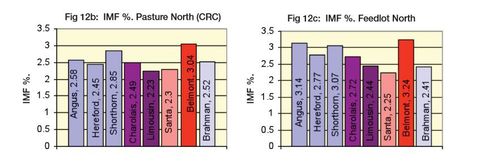About Us
Our Values
- Ethical and responsible treatment of all animals and our land
- Integrity – Transparent, honest, accountable, respectful, trustworthy
- Strive to Improve – We are passionate about Belmont Reds and want to improve our herd
- Be Open and Proactive Learners – Remain curious and learn from others
Our Mission
Our mission is to breed outstanding Belmont Bulls with the goal of surpassing the breed average EBv’s
Meat Quality
Marbling (IMF %) in the NORTH
Belmonts have the best marbling, and surpassed even the Angus under pasture and feedlot conditions in the North.
Belmont Australia, 2010. Belmont Bull Book Final. Armidale: Belmont Australia, p.7. Available at: http://belmontred.com.au/
Marbling ( IMF%) in the SOUTH
The higher the Meat Quality Score is, the more desirable the beef is. The Belmont scores very highly in all environments.
Belmont Australia, 2010. Belmont Bull Book Final. Armidale: Belmont Australia, p.7. Available at:
http://belmontred.com.au/
Breed Objectives
The Belmont is about a philosophy of breeding highly productive, easy care cattle, that are adapted to their environment.
The Belmont Red Society has based its standards on productive and adaptive traits that can be objectively measured and are known to be heritable. Selection is therefore based on accurate measurements of traits that are heritable and economically important in terms of beef production. Any Belmont animal must therefore be reared in a herd which has adopted a system of performance recording that has been approved by Council, such as Breedplan.
History and Origins
Over time, natural and artificial selection pressures have resulted in different attributes being fixed in the older established cattle breeds. Thus Brahmans and Africanders (tropically adapted native breeds) are renowned for their heat tolerance and tick resistance, British breeds for their fertility and carcase traits, and the European breeds for their large size, lean carcases and high growth rate. Conversely breed types also have production weaknesses, eg Brahmans have low fertility and less acceptable meat quality, British and European breeds have low tolerance to environmental stresses, such as high ambient temperatures, poor nutrition and high parasite burdens.
In Northern Australia, attempts to blend the various production and adaptive traits of the established breeds have resulted in the formation of Composite breeds from crosses between Adapted Tropical breeds and British and European breeds. In Australia the majority of Composite breeds have evolved from crossing the Brahman with temperate breeds, eg Droughtmaster (Brahman x Shorthorn), Brangus (Brahman x Angus), Braford (Brahman x Hereford), Charbray (Brahman x Charolaise) etc. and the Santa Gertrudis (Brahman x Shorthorn) in USA.
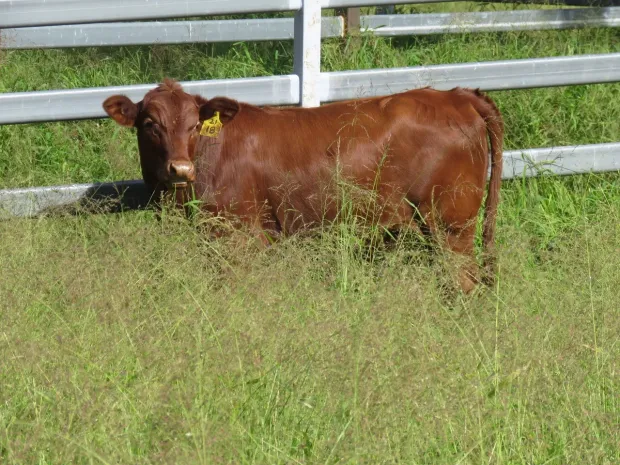
Slide title
Write your caption hereButton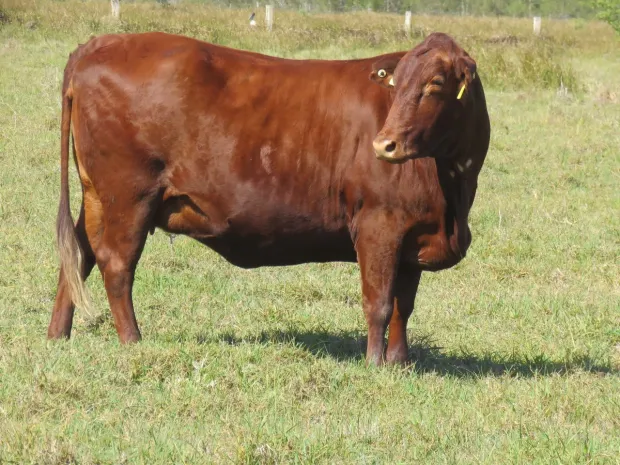
Slide title
Write your caption hereButton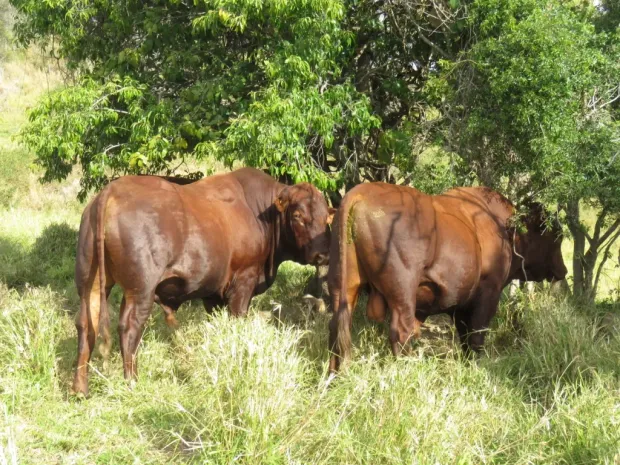
Slide title
Write your caption hereButton
The Belmont evolved as a result of crossbreeding experiments commenced at the National Cattle Breeding Station, ‘Belmont’ Rockhampton in 1954. The primary purpose of the Research programme was to evaluate the role of the Africander and Brahman breeds for beef production in Northern Australia. Imported Africander (A) and Brahman (B) bulls and Australian Hereford (H) and Polled Shorthorn (S) bulls were mated at random to Hereford and Polled Shorthorn cows. These matings produced essentially three distinct genetic lines of cattle based on the genetic differences between the sire breeds. From the outset of the Research programme at “Belmont”, the high fertility of the Belmont (Africander Cross) distinguished it from the Brahman cross line and the British breeds.
To increase productivity of the Northern herds, fertility needed to be increased. Improving fertility through selection is difficult and slow. Using the Africander Cross (Belmont) to increase the fertility of the predominantly Brahman infused Northern herds was considered to be a rapid and effi cient means of improving production. Therefore the Belmont was released to the Industry in 1968. Four decades later this decision has been vindicated by CRC economic modelling, showing that on an individual herd level, African based composites such as the Belmont Red produced an extra gross margin of $24 per head (on grass) and under a grain finished scenario, the extra gross margin amounted to a premium of $76 per AE more profit than a systematic rotational crossbreeding program using Brahmans.
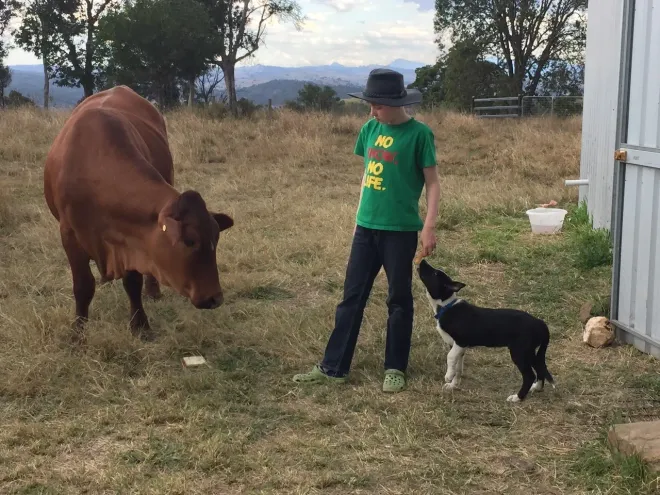
Slide title
Write your caption hereButton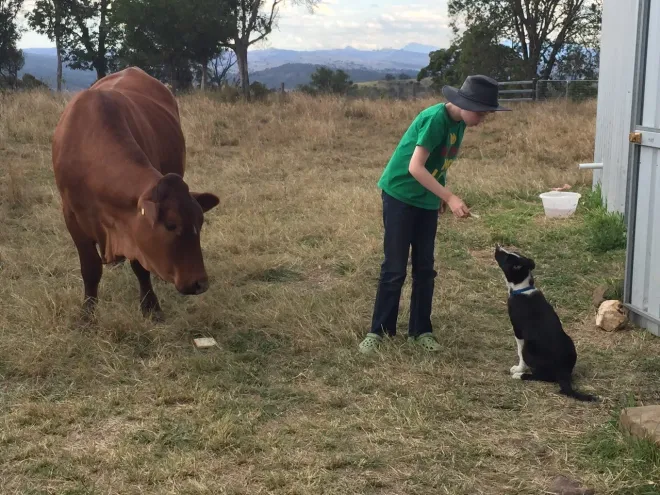
Slide title
Write your caption hereButton
Temperament
There is increasing evidence that temperament is not only advantageous for animal and people safety , but also for meat quality. Read more below.
Improving temperament: effects on productivity and meat quality, – FutureBeef December 2019
Belmont Reds are renowned for their docile nature and easy handling and management.
Beef CRC research found favourable relationships between temperament and meat quality, feedlot performance, ease of transport and some reproductive traits.
Research consistently shows that temperament is moderately to highly heritable, meaning selection to improve the temperament of progeny will be effective.
Heat Tolerance
According to Belmont Australia, when compared to British breeds, about 25% of the higher growth of Belmonts was accounted for by their heat tolerance.
The superior heat tolerance of Belmonts is largely due to their higher sweating capacity and sleeker coats.
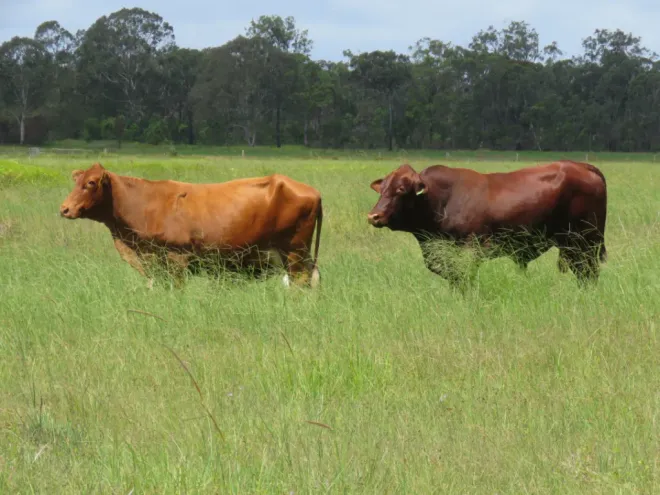
Slide title
Write your caption hereButton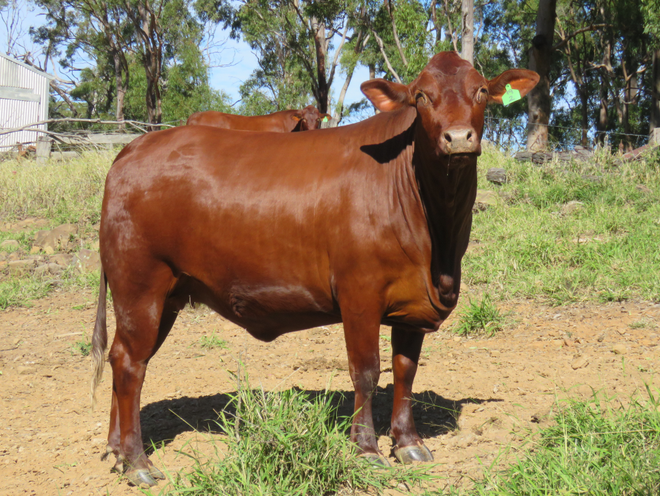
Slide title
Write your caption hereButton
Fertility
We select on fertility. Cows are culled if they do not produce a calf every year. Measuring fertility is important as it results in improved economic returns.
Profitable beef businesses of the future will be those that have already started some years earlier to improve the inherent fertility of their breeder herd through monitoring performance, identifying problem areas and making sound management decisions. (FutureBeef, 2011)
Contact Us
Contact Us
We will get back to you as soon as possible.
Please try again later.
© Copyright 2024 | All Rights Reserved | Bellevue Belmont Reds
Web Design By ACM Digital

